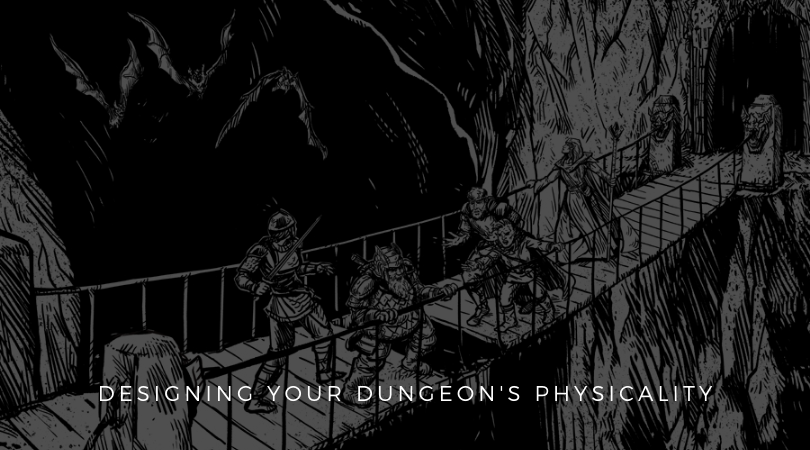Designing Your Dungeon’s Physicality

A well-designed dungeon provides explorers opportunities to interact with its terrain features. Dungeons with nothing but smooth floors, featureless walls and plain ceilings realise only a fraction of their potential. Not only are they boring to explore, but they are also boring to fight in.
A superior dungeon gives the characters a chance to interact with its physicality. Combat should not be the only physical challenge explorers face during a delve. No matter the game system you use for dungeon delving, it likely features rules for dealing with physical challenges such as climbing, swimming and jumping. Use them!
You should consider the physicality of their dungeons for several reasons:
Problem Solving
A deep chasm presents a challenge wholly different to a tricky fight and forces explorers to problem solve if they want to reach the other side. Such challenges promote teamwork, lateral thinking and clever play.
Change of Pace
Dungeons featuring nothing but battles can get boring quickly. Dungeons with significant physical challenges promote a change of pace and enable the characters to use other, non-combat related equipment, skills, powers and spells.
Interesting Fights
Battles fought upon a slippery stair or on the brink of a pit are inherently more exciting than those fought in a standard, featureless corridor and provide combatants with different tactical options.
Similarly, statues, furniture, rubble and so on shape the battlefield and provide smaller game-related benefits for clever combatants. Clever characters might push over a statue onto a monster, dash up some stairs to get a better vantage point and so on.
Segment the Dungeon
Large terrain features—lakes, chasms, raging rivers and so on—can segment the dungeon and provide an excellent reason for areas of different flavour.
They can also act as barriers to exploration or obvious “signposts” that the characters are about to enter a different level, sub-level or area. Such features can also serve as boundaries between one group of dungeon dwellers and the next.
Flavour & Verisimilitude
To a reasonable degree, flavour and verisimilitude are good things. They make the dungeon more believable and real. Providing this backdrop differentiates your dungeon from other similar complexes and makes it more memorable for the players.
The Final Word
A dungeon is so much more than a featureless collection of rooms linked by featureless corridors. Such a “feature set” does nothing to suspend your players’ disbelief. Given that our hobby is a game of the imagination, such a dungeon is unlikely to be memorable.

Member discussion